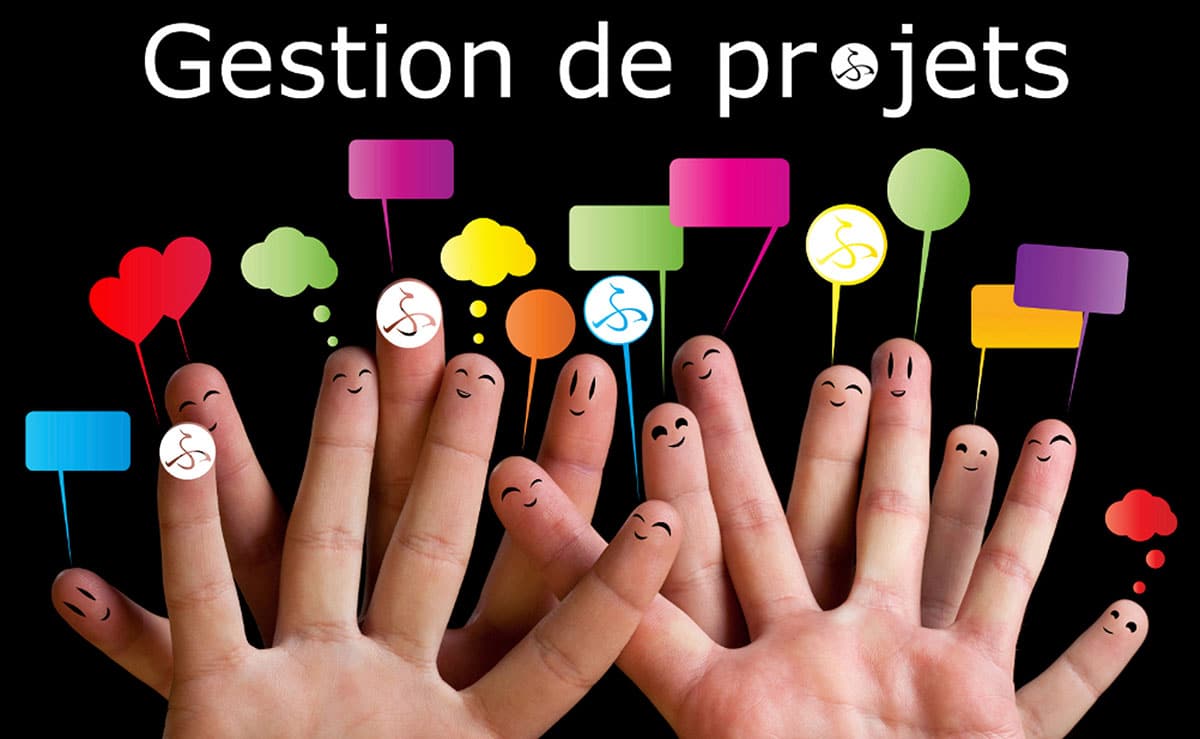In the professional world, every sector of activity has its own technical jargon which it is essential to master. Whether you are a project manager or a member of the project team, if you are new to project management, you should familiarise yourself with the specific terms and concepts that are used. This will help you to understand what you are being told and avoid being lost in the first few meetings.
Here is a small glossary of the most common project management vocabulary to help you understand and show that you have mastered the subject.
Agile
Agile is a flexible project management method that allows the team to be responsive and adapt to changing customer demands. This approach emphasises collaboration and communication between the project team and the client. The client’s needs and their evolution are constantly taken into account in order to provide a high-quality product.
Project manager
The project manager is the person responsible for steering a project and ensuring that it runs smoothly. Their role is to supervise the various stages of the project, from the drawing up of the specifications to delivery to the client, ensuring that the deadlines and budget are respected. His or her tasks are varied and generally involve supervising a team, planning, or dealing with the client.
Critical path
This is the longest sequence of tasks in the project. The critical path includes all the necessary tasks (called critical tasks), the time estimates for each task, the dependencies between tasks and the final deliverables. However, it does not take into account any risks, flexibilities, contingencies or unforeseen events. It is the minimum duration of the project. The Critical Path Method helps you to identify priority tasks and to do everything possible to meet the deadlines.
Gantt
The Gantt chart is an effective tool, widely used in project management because it allows you to visualise all the tasks in a project, their dependencies, their start and finish dates, their duration, their deadlines and to monitor their progress.
Risk management
There is no such thing as zero risk in project management. A risk is an event that can have a negative impact on your project and affect its success. Risk management is about anticipating and minimising potential risks. This is done by identifying possible risks, assessing their consequences and likelihood of occurrence, and planning an appropriate response to eliminate them or reduce their impact.
Key performance indicators or KPIs
In order to monitor the progress of your project, you need to put in place indicators that allow you to measure where you are in relation to the objectives to be achieved. These KPIs (Key Performance Indicators) help you to assess a situation at a given moment and to take the appropriate decisions.
To be effective, your indicators must be simple, easy to understand, reliable and realistic.
Milestone
A milestone is a key date in the completion of a project. It is usually the end of an important stage or event in the project. Milestones appear clearly in the schedule. They are an opportunity for the team and stakeholders to take stock of the project’s progress, to validate the stage that has just been completed and to approve the resulting deliverables. The objectives for the next milestone are validated or new ones are defined, and then work is resumed.
Deliverable
The completion of a project usually results in the delivery of a product or service to the client. This is called a deliverable. However, a project may have several deliverables that the project team provides to the client at the end of each stage or milestone. For example, in the development of a mobile application, a deliverable can be a new feature.
But a deliverable can also be a working document like a specification or a feasibility study.
In any case, a deliverable is a specific, tangible and measurable result with a deadline.
Project management software
This tool is essential to facilitate the management of your projects. Gantt chart, task and resource manager, shared calendars, reporting tools, instant messaging, etc., project management software such as Wimi has all the features you need to effectively manage your projects and foster collaboration within your team.
Stakeholders
These are all the people, groups of people or organisations that are directly or indirectly affected by the implementation of your project. Stakeholders can be involved in or influence a decision, a task or the outcome of the project. Therefore, it is necessary to take them into account or consult them throughout the project.
Examples of stakeholders: company management, project team, shareholders, end-users, customers, suppliers, public or private organisations, investors, etc.
Launch meeting
Also known as the kick-off meeting, the launch meeting is the first meeting to start a project. It brings together all the stakeholders so that they can get to know each other. This meeting is fundamental because it enables the foundations of the project to be laid, the essential elements to be discussed (planning, milestones, deliverables, budget, resources), the rules of operation and good practice to be defined, and it ensures that all the people concerned have the same information.
Dashboard
The dashboard is an essential summary tool to help you manage your project. It is a medium (usually digital) on which you can find all the information essential for managing a project. The dashboard allows you to monitor the progress of the project using indicators, to evaluate the performance of your team members and to make the right decisions at the right time.









